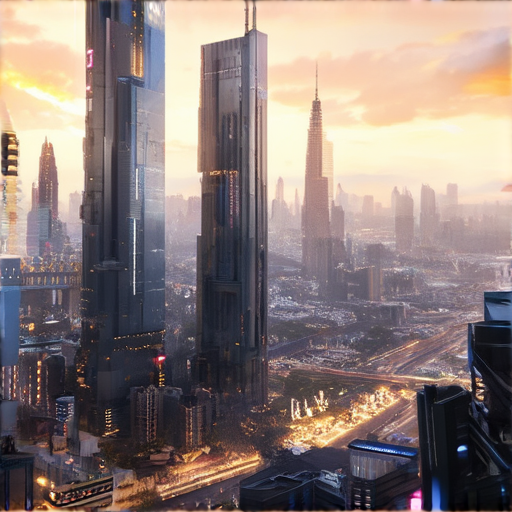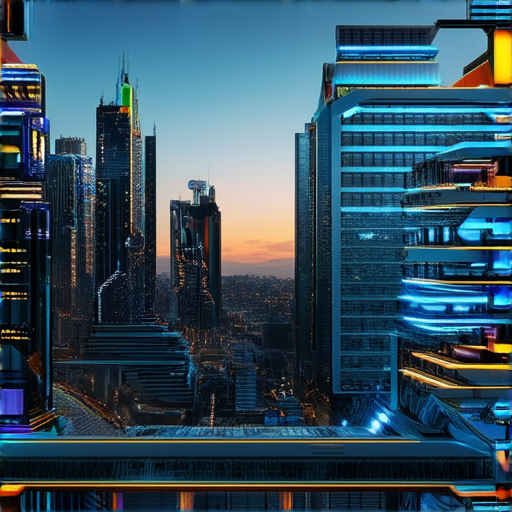As we step into the uncharted territories of 2024, one thing becomes increasingly clear – the landscape of web design is undergoing a profound transformation. Gone are the days of static websites and clunky interfaces; today’s users demand a seamless, intuitive, and visually stunning online experience that not only captivates their senses but also resonates with their needs. With the ever-evolving world of technology and shifting user behaviors, it’s imperative for businesses and designers alike to stay ahead of the curve by embracing the latest web design trends, leveraging cutting-edge tools and techniques, and prioritizing SEO and user engagement above all else.

The New Trend in Web Design
In recent years, web design has undergone significant changes, shifting away from excessive animation and 3D elements towards a more intentional and refined approach.
-
Purposeful Animations:
Designers are now focusing on using animations to enhance user experience, rather than relying on them as default features. -
Strategic 3D Elements:
While 3D elements are still used, they are now employed thoughtfully to add depth and visual interest to designs. -
Minimalism:
The trend towards minimalism continues, with designers prioritizing simplicity and clean aesthetics. -
Accessibility:
With the rise of accessibility-focused design, websites are becoming more inclusive and usable for people with disabilities. -
Responsiveness:
As mobile usage increases, responsive design remains essential for providing a seamless user experience across devices. -
Personalization:
With advancements in technology, personalization is becoming increasingly important, allowing users to tailor their online experiences to suit their needs. -
Sustainability:
As concern for the environment grows, sustainable design practices are emerging, focusing on eco-friendly materials and energy-efficient solutions.
At
119webdesign.com
, we’re committed to staying ahead of the curve and delivering cutting-edge web design solutions that meet the evolving needs of our clients.
Some notable mentions in the web design space include:
- Wix
- Squarespace
- WordPress
These platforms continue to push the boundaries of web design, offering innovative tools and features that enable creators to bring their visions to life.
As we move forward, it’s essential to remain adaptable and open to new ideas, ensuring that our designs remain fresh, engaging, and effective in capturing the attention of our target audiences.
The Future of Web Design in 2024
In 2024, web design is expected to undergo significant changes driven by technological advancements, shifting user behaviors, and evolving design trends.
-
Responsive and Mobile-First Design:
As more users access websites on their mobile devices, responsive and mobile-first design will continue to dominate the landscape. This approach ensures a seamless user experience across various screen sizes and devices. -
Artificial Intelligence (AI) Integration:
AI-powered tools will become increasingly prevalent in web design, enabling designers to automate repetitive tasks, analyze user behavior, and create personalized experiences. -
Voice User Interface (VUI):
With the rise of voice assistants, VUI will play a crucial role in shaping the future of web design. Designers will need to consider how users interact with websites using voice commands. -
Sustainability and Accessibility:
As consumers become more environmentally conscious, sustainable web design practices will gain importance. Designers will focus on creating accessible, inclusive, and eco-friendly websites that cater to diverse user needs. -
WebAssembly and Progressive Web Apps (PWAs):
WebAssembly will enable faster loading speeds and improved performance, while PWAs will offer native app-like experiences without the need for downloads. -
Design Systems and Component-Based Design:
Design systems will become essential for maintaining consistency and efficiency in web design. Component-based design will allow designers to reuse and customize UI components across projects. -
AR and VR Integration:
Augmented reality (AR) and virtual reality (VR) technologies will start to influence web design, enabling immersive experiences and new forms of interaction. -
Content Management Systems (CMS) Evolution:
CMS platforms will continue to evolve, offering improved flexibility, scalability, and security features to support the growing demands of web design.
To stay ahead in the rapidly changing web design landscape, designers must adapt to these emerging trends, invest in ongoing education, and explore innovative solutions to deliver exceptional user experiences.

Design Trends in 2024
As we dive into the year 2024, I’m excited to share the latest design trends that are taking the world by storm.
-
3D Surrealism:
With the rise of AI technology, 3D surrealism is becoming increasingly popular. This style features inflatable, 3D-like designs that transport us to a futuristic world. -
Neon Colors:
Neon colors are making a comeback in 2024, adding a touch of retro flair to designs. From neon signs to neon-colored graphics, this trend is sure to brighten up any space. -
Minimalism:
As we continue to navigate the digital age, minimalism is becoming a staple in design. Clean lines, simple shapes, and plenty of negative space are defining characteristics of this trend. -
Sustainable Design:
With the growing concern for the environment, sustainable design is becoming a top priority. Eco-friendly materials, recycled textures, and energy-efficient solutions are just a few ways designers are incorporating sustainability into their work. -
Personalization:
In 2024, personalization is key. Designs are becoming more tailored to individual tastes, preferences, and experiences. Whether it’s through custom illustrations or personalized typography, this trend is all about making a statement. -
Interactive Design:
Interactive design is taking center stage in 2024. From immersive experiences to interactive graphics, designers are pushing the boundaries of what’s possible.
These design trends are not only visually stunning but also reflect the changing needs and values of our society. As we move forward in 2024, I’m excited to see how these trends evolve and shape the world of design.
Key Takeaways:
- 3D surrealism is a rising star in the design world.
- Neon colors are making a comeback.
- Minimalism is still going strong.
- Sustainable design is becoming a top priority.
- Personalization is key in 2024.
- Interactive design is taking center stage.
Conclusion:
In conclusion, 2024 is shaping up to be an exciting year for design. From 3D surrealism to sustainable design, there’s something for everyone. By staying on top of these trends, designers can create innovative, effective, and visually stunning designs that capture the hearts and minds of audiences everywhere.

The 7 Cs of Effective Website Design
In today’s digital landscape, having a well-designed website is crucial for businesses to establish a strong online presence and connect with their target audience.
-
Context:
Understanding your target audience, their needs, and preferences is essential in designing a website that resonates with them. This involves conducting thorough market research, analyzing customer feedback, and staying up-to-date with industry trends. -
Commerce:
A successful e-commerce website requires a seamless shopping experience, secure payment processing, and efficient order management. This includes implementing features like product filtering, reviews, and ratings to enhance user engagement. -
Connection:
Building trust and establishing a connection with your visitors is vital in converting them into loyal customers. This can be achieved through the use of high-quality visuals, engaging storytelling, and transparent communication. -
Communication:
Clear and concise messaging is critical in conveying your brand’s values, mission, and unique selling proposition. This involves crafting compelling headlines, concise copywriting, and utilizing visual elements to support your narrative. -
Content:
High-quality, relevant, and regularly updated content is essential in attracting and retaining visitors. This includes blog posts, videos, infographics, and other forms of multimedia content that educate, entertain, and engage your audience. -
Community:
Fostering a sense of community around your brand involves creating opportunities for interaction, feedback, and collaboration. This can be achieved through social media integration, forums, and loyalty programs that encourage user participation and loyalty. -
Customization:
Providing a personalized experience for your visitors involves tailoring your website’s content, layout, and functionality to meet their individual needs and preferences. This can be achieved through the use of cookies, user profiling, and adaptive design techniques.
By incorporating these 7 Cs into your website design, you can create a robust online presence that attracts, engages, and retains your target audience, ultimately driving business growth and success.
The Five Golden Rules of a Well Designed Web Page
As a web designer, I always strive to create websites that are visually appealing, user-friendly, and effective in communicating the message of my clients.
- Rule 1: Ease of Navigation
- A well-designed website should have a clear and intuitive navigation menu that allows visitors to easily find what they’re looking for.
- This can be achieved by using a consistent layout, clear typography, and concise labeling.
- Rule 2: Useful Original Content
- High-quality, engaging, and relevant content is essential for attracting and retaining visitors.
- This can include blog posts, articles, videos, images, and infographics that provide value to the audience.
- Rule 3: Layout Consistency
- A consistent layout helps to establish a strong visual identity and makes it easier for visitors to navigate the website.
- This includes using a consistent color scheme, typography, and imagery throughout the website.
- Rule 4: Responsive Design
- A responsive design ensures that the website looks and functions well on various devices, including desktop computers, laptops, tablets, and smartphones.
- This involves using flexible grids, images, and media queries to adapt to different screen sizes and orientations.
- Rule 5: Easy-to-Memorize URLs
- A well-designed URL structure helps to improve the user experience and search engine optimization (SEO).
- This involves using descriptive and concise URLs that accurately reflect the content of each page.
By following these five golden rules, web designers can create websites that are visually appealing, user-friendly, and effective in communicating the message of their clients.
For more information on web design best practices, check out our
Web Design Best Practices
guide.
Additionally, learn how to create a
Responsive Web Design
that adapts to different devices and screen sizes.
Discover the latest
Trends in Web Design
and stay ahead of the curve with our expert insights.

Designing a Website: A Step-by-Step Guide
As a web designer, I’ve worked with numerous clients to bring their vision to life online. In this article, I’ll walk you through the 7 major steps involved in designing a website.
-
Step 1: Planning and Research
- Determine the purpose and target audience of the website
- Conduct market research and analyze competitors
- Develop a unique value proposition (UVP)
-
Step 2: Wireframing and Prototyping
- Create low-fidelity wireframes to visualize the website’s layout
- Develop high-fidelity prototypes to test user interactions
- Refine the design based on feedback and testing results
-
Step 3: Visual Design
- Select color schemes, typography, and imagery that align with the brand
- Create a consistent visual language throughout the website
- Develop a responsive design that adapts to various devices
-
Step 4: Content Creation
- Develop a content strategy that resonates with the target audience
- Create high-quality, engaging content that meets the UVP
- Optimize content for search engines (SEO)
-
Step 5: Front-end Development
- Build the website’s front-end using HTML, CSS, and JavaScript
- Implement responsive design and mobile-first development
- Test and debug the website for cross-browser compatibility
-
Step 6: Back-end Development
- Set up a content management system (CMS) or custom database
- Integrate e-commerce functionality or other third-party services
- Secure the website with SSL encryption and regular backups
-
Step 7: Launch and Maintenance
- Launch the website and conduct thorough testing
- Monitor analytics and user feedback to identify areas for improvement
- Regularly update and maintain the website to ensure optimal performance

0 Comments